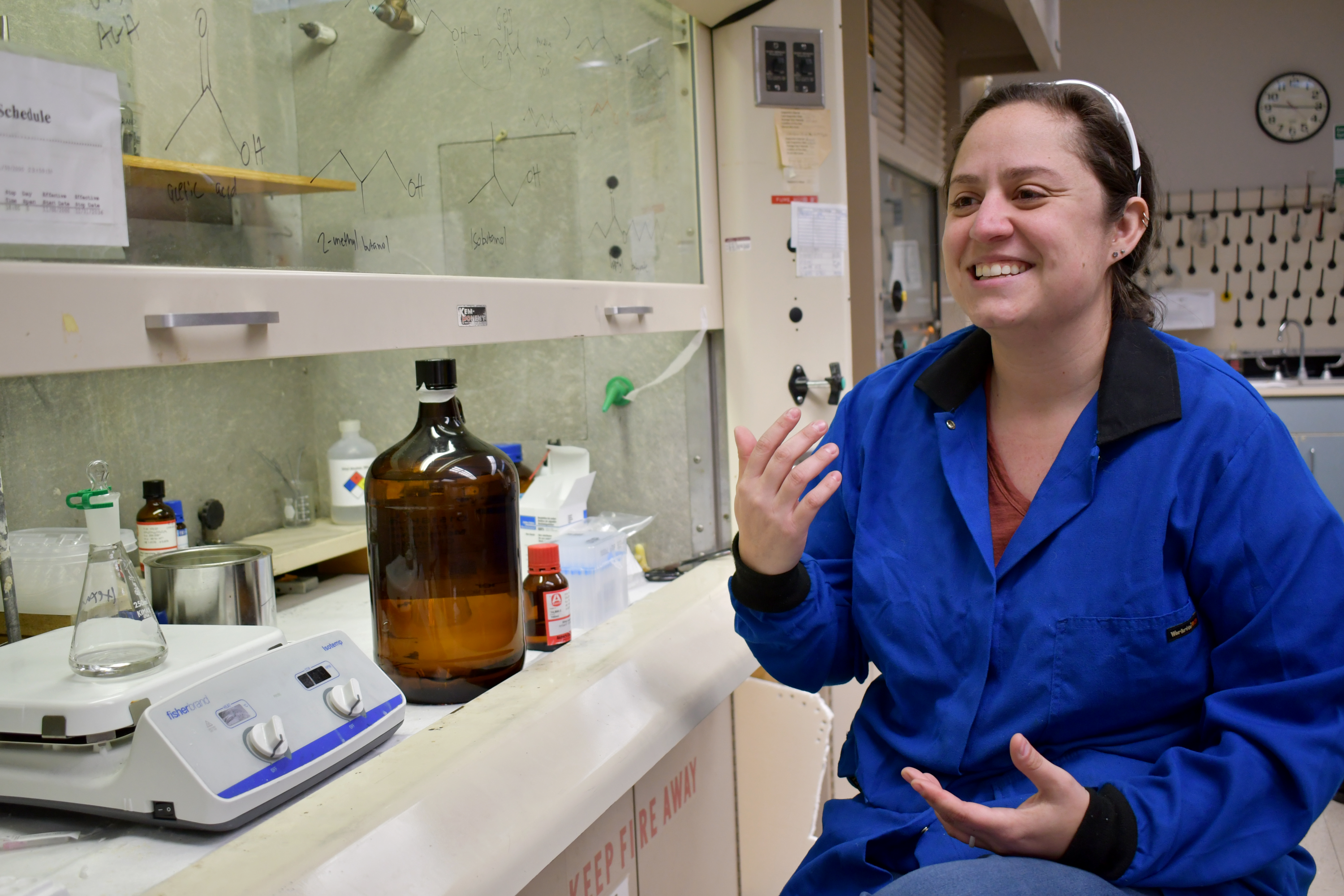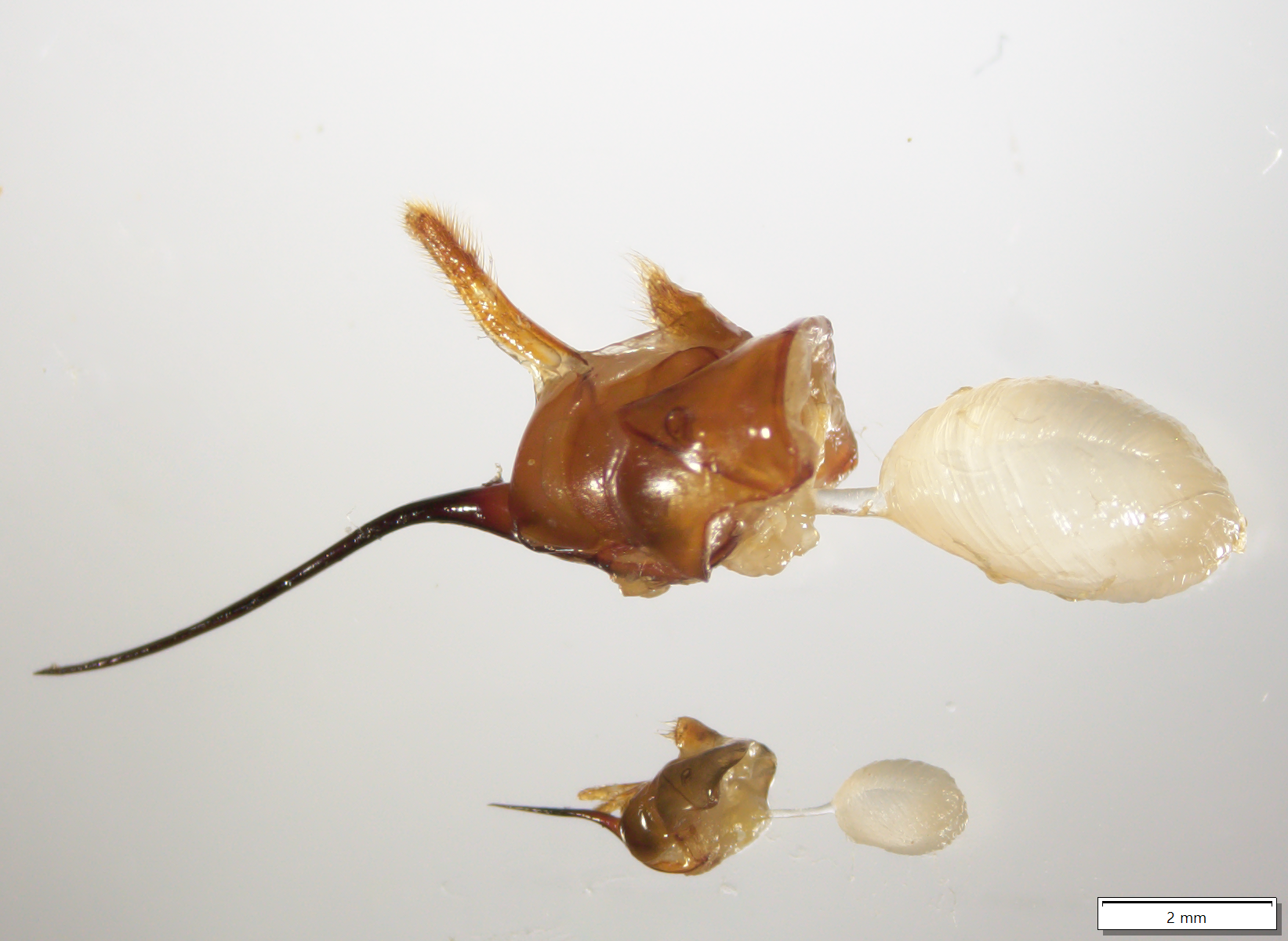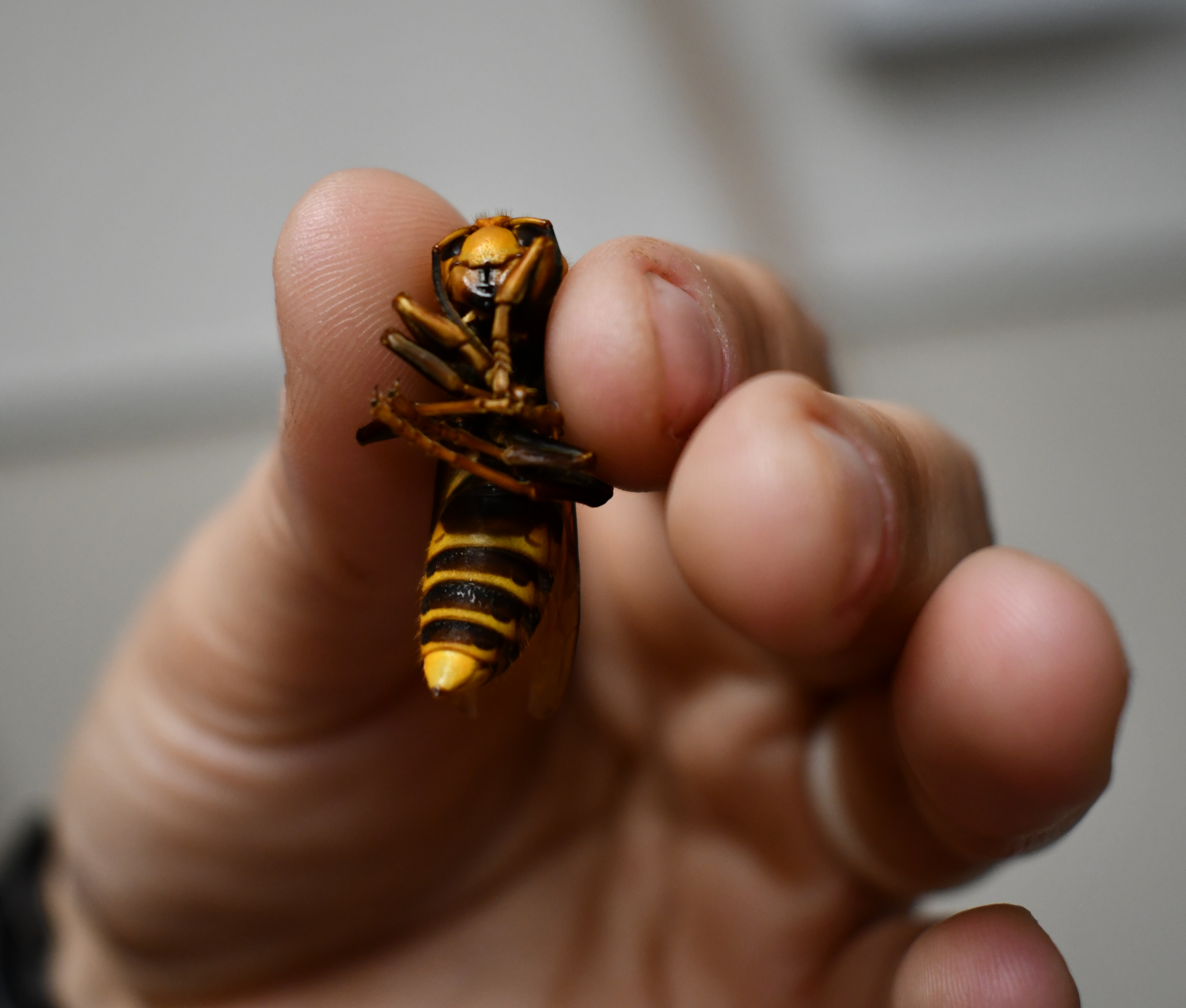Using Giant Hornets' Chemical Communications Against Them

Vespa Primavera – a cute Italian scooter. Vespa mandarinia – a terrifying hornet about the size of an Italian scooter.
OK, that’s an exaggeration but it’s hard to adequately describe the invasive Northern Giant Hornet until you’ve seen one up close. Dubbed the “murder hornet” by the press when first detected in Washington state in 2019, Northern Giant Hornets are the comic-book-villain version of paper wasps or yellow jackets – about four times bigger, more venomous and devastatingly predatory.
“After the first-generation workers emerge, they search for protein to feed the other developing larvae,” explained Jacqueline Serrano, a research entomologist with the U.S. Department of Agriculture’s Agricultural Research Service stationed in Wapato, Washington. “So they hunt other insects – bees, wasps, you name it. They hunt these other social Hymenoptera because they have nests with brood and the hornets will attack, kill all the adults and essentially have a brood buffet.”
Murder hornets, indeed.

It’s that threat to native and managed bees that makes the invasive hornets so concerning (although they do manage to kill a handful of people every year in their native range in Japan and the Korean peninsula.) The threat to bees and people is why when the first hornets made their way into the United States from British Columbia, where they were first accidently introduced from Asia, that federal and Washington state officials mobilized an immediate response.
Chemical Warfare
Like many other insects, the Northern Giant Hornet uses chemical signals to communicate. The hornets even use theirs to do their murdering more efficiently.
“There’s an alarm pheromone in their venom gland,” Serrano explained. “When they attack a threat, that pheromone is released and it triggers an alarm response in other hornets to attack as well. They also have a marking pheromone they use to tag a food source, like a honey bee hive, to recruit other hornets to help attack it.”
And while those chemical communication signals help hornet hives function with devastating efficiency, they also create vulnerabilities for someone with Serrano’s very particular set of skills.
A pre-med undergrad at U.C. Riverside, Serrano excelled in organic chemistry and took a couple of entomology classes out of curiosity. She wasn’t sure how to combine those intellectual interests until someone directed her to the lab of Jocelyn Millar, who just happened to be a) also located at UC Riverside, and b) one of the pre-eminent scientists in the field of detecting, decoding and synthesizing insect chemical signals.
“It all just clicked,” she said. Serrano got her Ph.D. in Millar’s lab and came to the Wapato research facility as a post-doc, tasked with developing chemical countermeasures at control wireworms, larvae of click beetles. She arrived in October 2019, shortly after the first detection of the hornets in the state and was drafted into the front lines of the battle when the research station’s former wasp expert unexpectedly passed away that December.
Attract, Trap, Track, Destroy
Serrano’s task, using gas chromatographs, mass spectrometers, decades of previous research and the detached antennae of dead hornets – which still react to the chemical signals the hornets share – was to develop chemically baited lures in the right kind of trap to capture roaming hornets alive.

Alive was important. The hornets are big enough to attach a transmitter to, and by catching, tagging, releasing and tracking them, the state’s hornet teams were able to find and eliminate hornet nests. Queens are killed immediately and Serrano’s lab gets live males and workers to use in their research.
The anti-hornet team destroyed several nests in 2020, a few in 2021 and there were no hornet detections in Washington in 2022. Serrano is still improving and perfecting her lure-trap combinations, testing them in Japan and South Korea where the hornets are plentiful, and they are beginning to work.
And while the collective effort might have prevented the Northern Giant Hornet from successfully establishing in Washington, there’s a bigger challenge ahead – in Guam.
Greater Banded Hornet
The Greater Banded Hornet, Vespa tropica, is ever so slightly smaller than Vespa mandarinia but behaves and feeds in much the same way. And unlike its infamous cousin, it didn’t get a lot of press when it hit American soil in 2016 in Guam.
As a result, the Greater Banded Hornet is in danger of becoming firmly established on the island and will be harder to eradicate – but with Western IPM Center funding, Serrano and Christopher Rosaria from the Guam Department of Agriculture’s Biosecurity Division are going to try.
“I’ll be going to Guam later this summer to set up traps and help put together a larger-scale invasive hornet project,” Serrano said.
The research will field-test known and experimental traps and attractants, and, using collected specimens, Serrano will begin developing species-specific pheromones to better lure and trap the banded hornets.

“If they become permanently established on Guam, it could seriously negatively effect the island’s apiculture and agricultural industries,” she said. “And the fear is always that when something is found on Guam, Hawaii could be next. Invasive hornets, Vespa orientalis, were recently found in Chile – they do travel.”
One potential advantage the Guam team will have over their Washington counterparts is more wasps to work with.
“The problem here in Washington is we didn’t know where the hornets were so we didn’t know where to start,” Serrano said. “In Guam, they can only go so far and we have more sense of where to put the traps. Plus, there are more hornets around.”
So now it’s a question of how well the existing chemical lures and traps work on the banded hornets, or if they don’t, how quickly Serrano can conjure up a chemistry that does.
“When you get it right it’s the coolest experience,” she said. “You make it in the lab, then put it out in the field. You come back in a few days and sometimes see thousands of insects in a trap because of something you made. That’s something.”